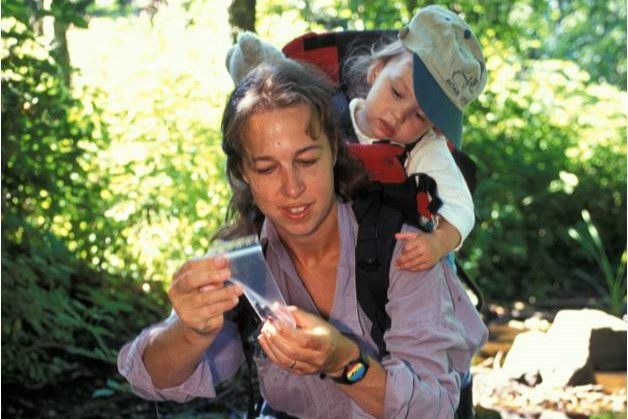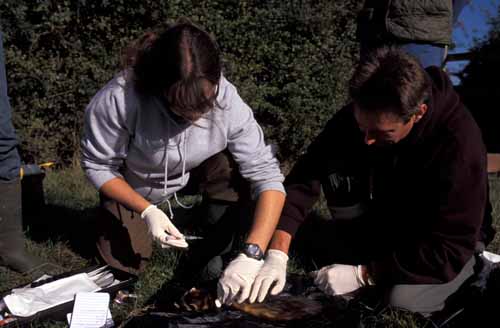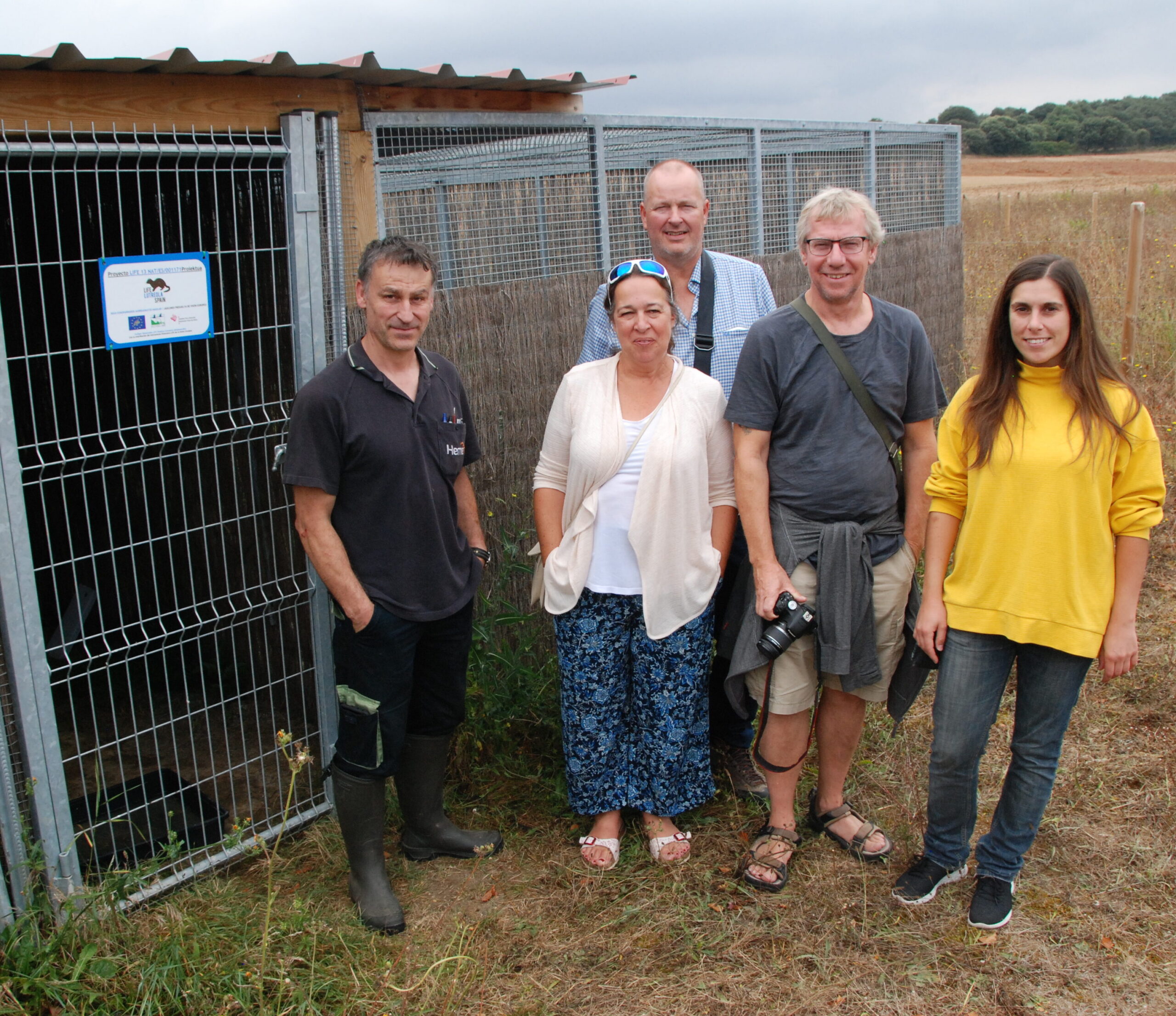
PROFILE
Lauren Harrington is a Senior Research Fellow at WildCRU. She is a wildlife biologist with a background in animal ecology and behaviour, and expertise in mustelids (specifically American and European mink). Having worked for more than 30 years in conservation research, the main focus of her work currently is animal welfare in conservation. She collaborates with animal welfare and veterinary scientists and seeks to bring animal welfare science into conservation practice and decision-making. Research questions of particular interest include: how do we measure animal welfare in the wild, how does individual animal well-being relate to population-level parameters, and thus how (and where, and when) does animal welfare complement or conflict with conservation? Her expertise in mink and other semi-aquatic species means that her work often (but not always) focuses on these species.
Lauren has worked on or been involved with several reintroductions (black-footed ferrets in the USA, beavers in Scotland, European mink in Estonia) and is particularly keen to see animal welfare issues considered in conservation practice, especially in the growing field/s of conservation (and other) translocations. Other areas of research include human ‘uses’ of wildlife (e.g. as exotic pets, or in tourism), and the role of social media in driving demand for these and other wildlife products.
At WildCRU Lauren co-leads two of our research themes: Health, Welfare, and Ethics and Wildlife Use and Misuse, is a member of the Senior Management Team, and supervises MBiol projects. She co-organised the Wild Musteloid Conference held at Oxford University in 2013, hosted by WildCRU, and the IUCN SSC Otter and Small Carnivore Specialist Groups, and co-edited the book Biology and Conservation of Musteloids published by Oxford University Press in 2017. She retains an on-going interest and professional involvement in the management of American mink as an invasive species across Europe and restoration of the Critically Endangered European mink.
Lauren gained her first degree in Applied Biology (specialising in Animal Physiology and Ecology) from Bath University. She completed a (research-based) Master’s degree in Fishery and Wildlife Biology at Colorado State University (focusing on the application of energetics models to evaluate black-footed ferret release-site potential), and a DPhil (focusing on the management of invasive American mink in the UK, and interactions between mink and native mustelids) in Zoology at Oxford University.




SELECTED PUBLICATIONS
Full publication list here.
The viewer doesn’t always seem to care—response to fake animal rescues on YouTube and implications for social media self-policing policies
Risks associated with the global demand for novel exotic pets: A new and emerging trade in snakehead fish (Channa spp.) from India
Trading Animal Lives: Ten Tricky Issues on the Road to Protecting Commodified Wild Animals
Conflicting and complementary ethics of animal welfare considerations in reintroductions
The impact of native competitors on an alien invasive: temporal niche shifts to avoid inter-specific aggression?
Dive performance in a small-bodied, semi-aquatic mammal in the wild
The viewer doesn’t always seem to care—response to fake animal rescues on YouTube and implications for social media self-policing policies
Animal-related content on social media is hugely popular but is not always appropriate in terms of how animals are portrayed or how they are treated. This has potential implications beyond the individual animals involved, for viewers, for wild animal populations, and for societies and their interactions with animals. Whilst social media platforms usually publish guidelines for permitted content, enforcement relies at least in part on viewers reporting inappropriate posts. Currently, there is no external regulation of social media platforms. Based on a set of 241 ‘fake animal rescue’ videos that exhibited clear signs of animal cruelty and strong evidence of being deliberately staged (i.e. fake), we found little evidence that viewers disliked the videos and an overall mixed response in terms of awareness of the fake nature of the videos, and their attitudes towards the welfare of the animals involved. Our findings suggest, firstly, that, despite the narrowly defined nature of the videos used in this case study, exposure rates can be extremely high (one of the videos had been viewed over 100 million times), and, secondly, that many YouTube viewers cannot identify (or are not concerned by) animal welfare or conservation issues within a social media context. In terms of the current policy approach of social media platforms, our findings raise questions regarding the value of their current reliance on consumers as watch dogs. Read the free Plain Language Summary for this article on the Journal blog.